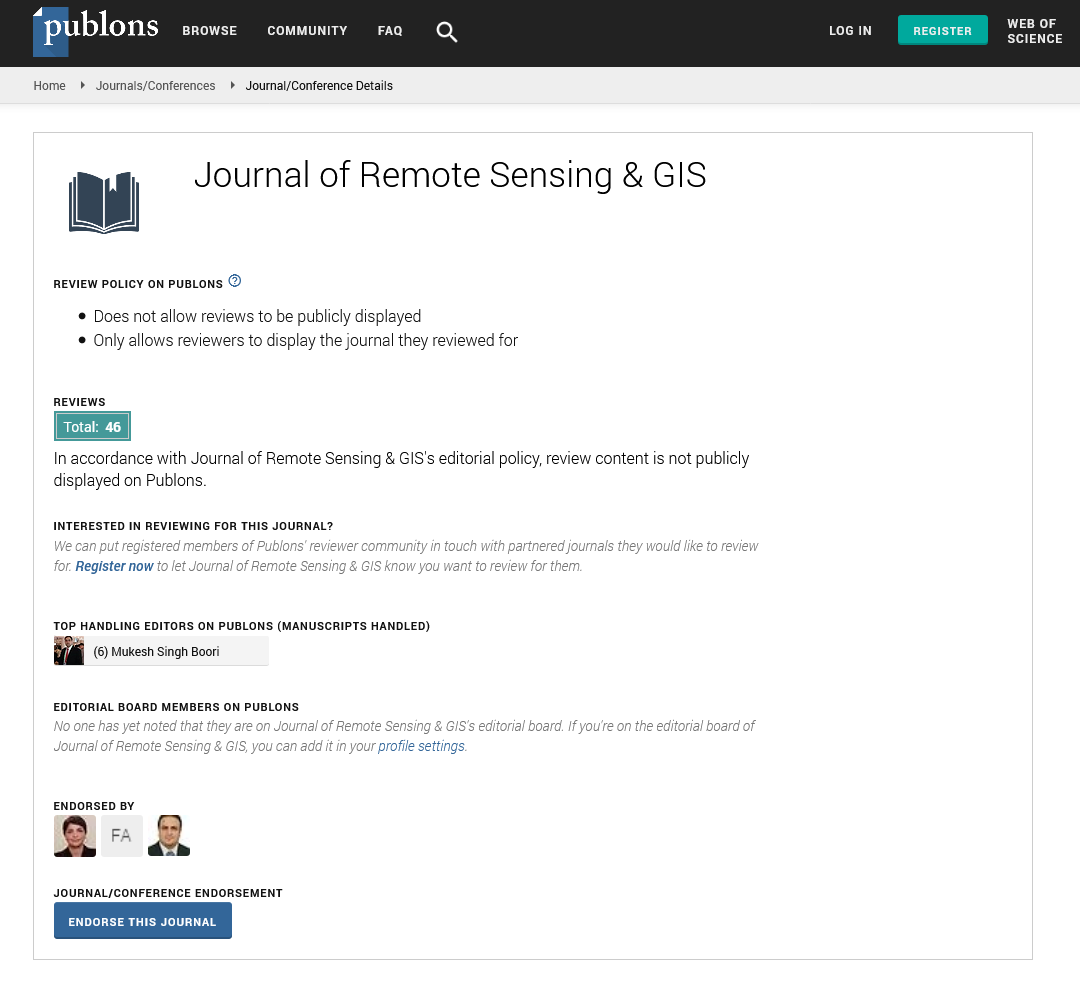Indexed In
- Open J Gate
- RefSeek
- Hamdard University
- EBSCO A-Z
- OCLC- WorldCat
- Publons
- International Scientific Indexing
- Euro Pub
- Google Scholar
Useful Links
Share This Page
Journal Flyer

Open Access Journals
- Agri and Aquaculture
- Biochemistry
- Bioinformatics & Systems Biology
- Business & Management
- Chemistry
- Clinical Sciences
- Engineering
- Food & Nutrition
- General Science
- Genetics & Molecular Biology
- Immunology & Microbiology
- Medical Sciences
- Neuroscience & Psychology
- Nursing & Health Care
- Pharmaceutical Sciences
Abstract
Analysing the Effects of Landuse Change on the Physical Environment of Teknaf and Ukhiya Upazila due to the Influx of Rohingya Refugees in Bangladesh
Tahrima Jui Era and Zannatul Ferdous*
Earth surface isn’t a static place, it is always undergoing rapid changes with various anthropogenic al activities and due to this, surrounding physical environment is also changing. Ukhiya and Teknaf are two sub-districts of Cox’s Bazar in Bangladesh. It has conveyed a significant standing for the natural resources like, wildlife and the forest cover. The purpose of this research paper is to look at the long-term consequences of the Rohingya Influx on the surrounding physical environment like vegetation coverage, land cover, and Land Surface Temperature (LST) in Teknaf and Ukhiya upazila, Cox’s Bazar, Bangladesh. For completing this research, LANDSAT 8 images were collected from Earth Explorer (USGS). The study shows that the area around the Rohingya Camps has gradually lost vegetation density because of massive deforestation as well as the increasing rate of compact housing settlement. According to this study, in 2017 before the influx of Rohingya Refugees, 64% of overall land use was covered by dense vegetation, which gradually reduced after the influx of Rohingya invasion in 2017. Following the August 2017 catastrophe, vegetation cover has dropped to 54% in 2019. According to the findings, land cover change has accelerated and dense vegetation has gradually been decreasing from 58% to 28%. As a result, the Land Surface Temperature (LST) has gradually increased. It implies that deforestation has resulted in the loss of a substantial amount of vegetation, and the LST of this region has altered dramatically.
Published Date: 2022-08-17; Received Date: 2022-07-15

